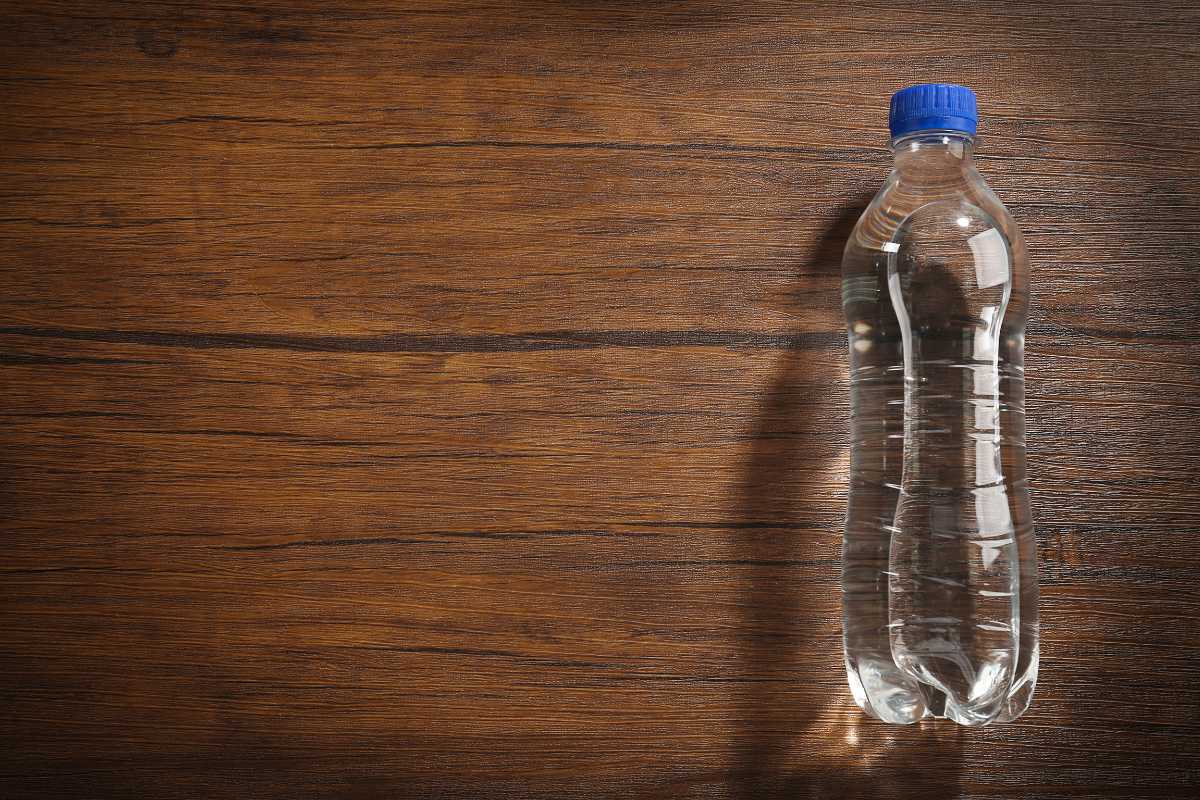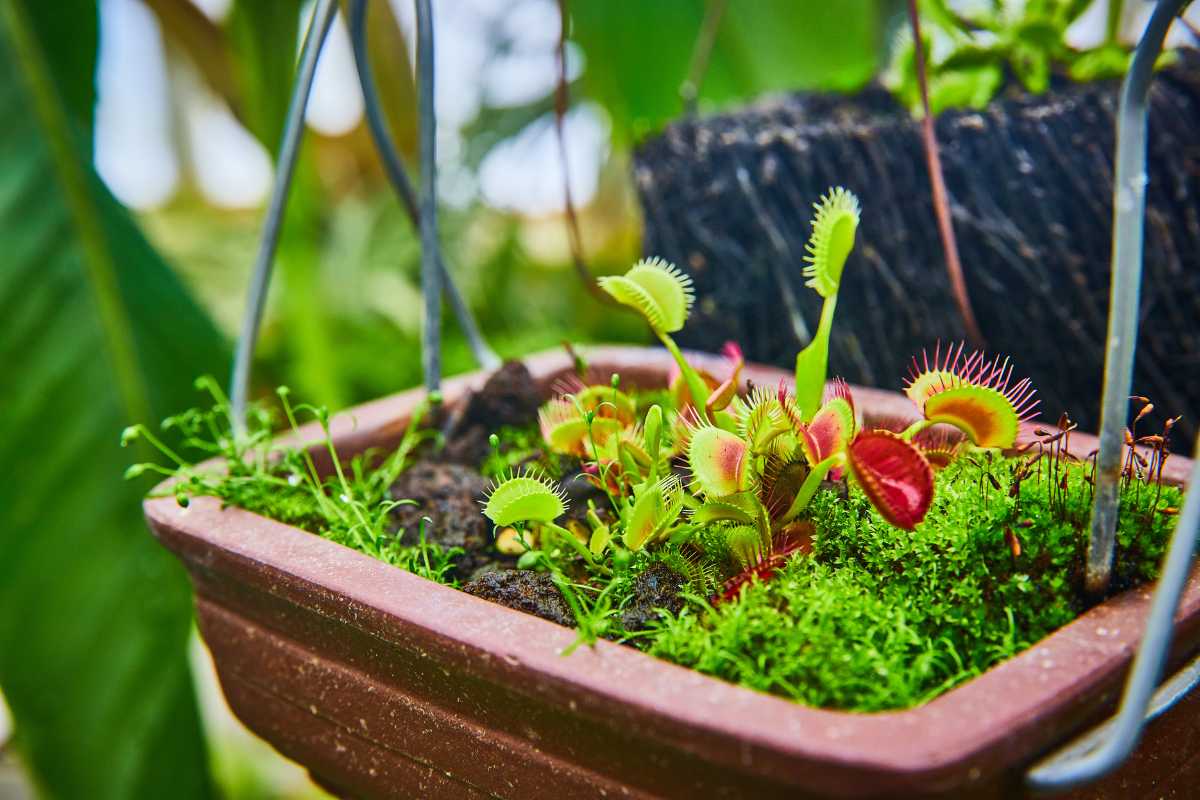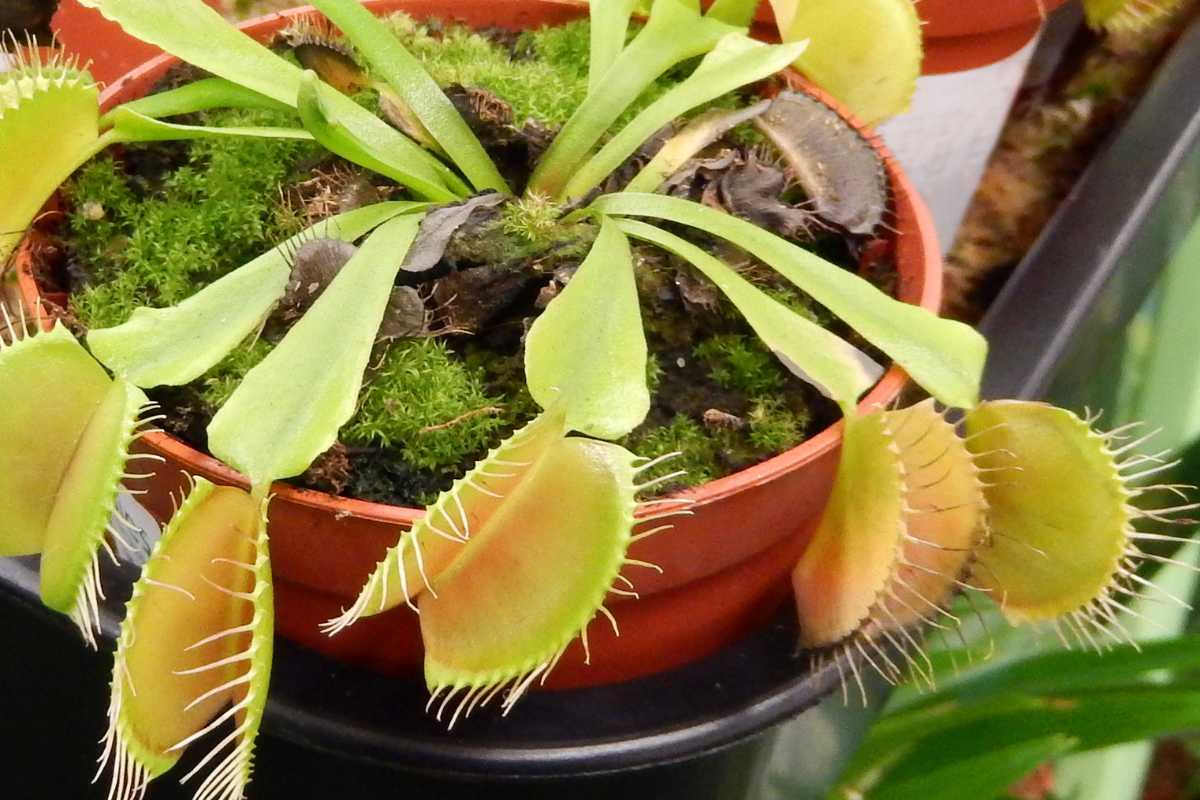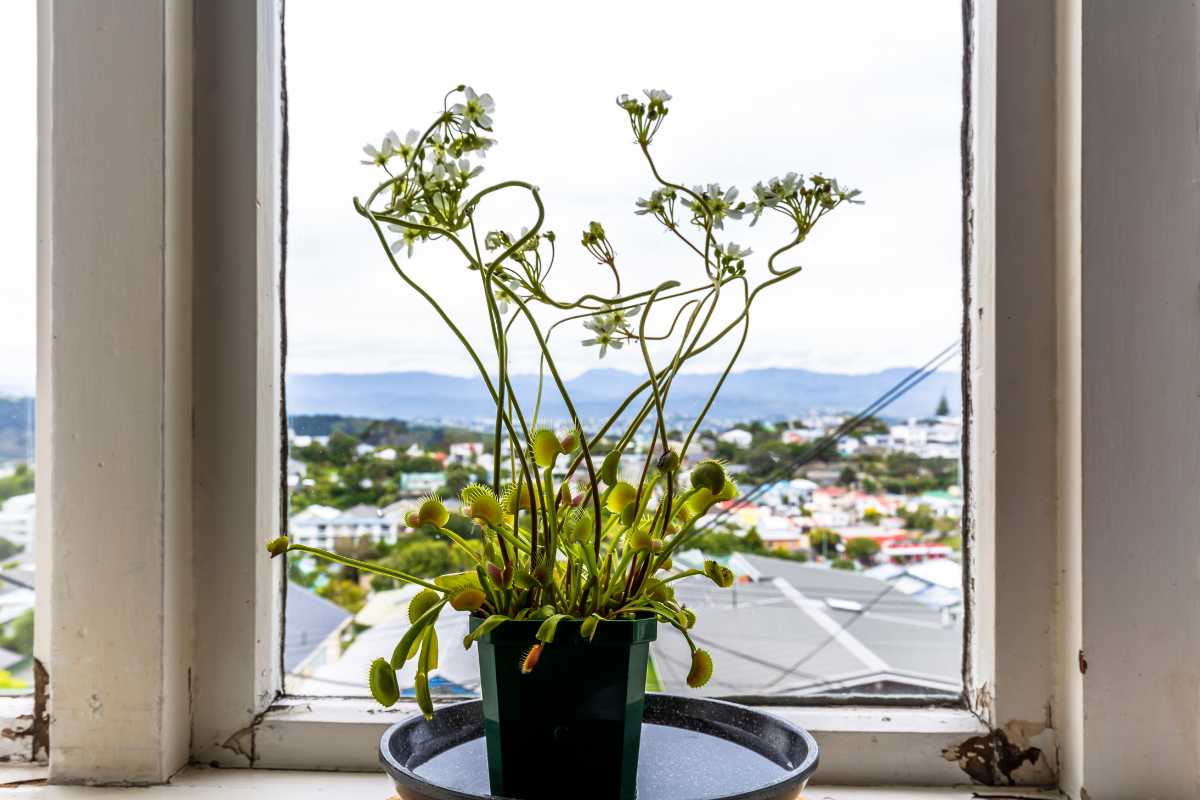Venus flytraps are popular carnivorous plants native to North America. These deadly-looking plants are often used as a metaphor for poisonous relationships. They’re well known for trapping and digesting their insect prey with their traps.
But many people wonder – can you overwater a Venus fly trap? You sure can! Watering Venus fly trap plants requires you to keep an eye on the plant and what it’s telling you.
This guide will show you how to water Venus fly trap plants correctly so that you get healthy growth and vibrant colors. You’ll also find out why do Venus fly traps need distilled water.
Best Types of Water for Venus Flytraps

Let’s start with the type of water that would be good for Venus flytraps. You may think that tap water is fine, but it isn’t always true.
Tap water has chlorine in it, which can kill your plant if not properly filtered or treated. It also contains minerals like calcium and magnesium which aren’t necessary for growing Venus flytraps.
If you want to use tap water, it’s best to put the tap water in a bucket first and leave it out to sit for 24 hours at least. That will allow some of the chlorine and minerals dissipate before you use it on your plants.
Instead, use distilled water because it doesn’t contain any chemicals at all. If you don’t have access to distilled water then try using reverse osmosis water instead. There are water filters you can buy online that will connect directly to the sink.
Another great option is to use rainwater. If you have many houseplants, it’s a good idea to collect your own rain and use them to water your plants. Get a rain barrel catcher to easily catch the rain from your gutters.
How Much Water Does a Venus Flytrap Need?

The amount of water needed and how often to water a Venus fly trap will depend on the plant’s environmental conditions. To understand how your home and local area affects how much water you need is to keep a log of when you water plants.
You’ll start understanding how fast your Venus flytrap absorbs and uses water.
Is the Venus Flytrap Indoors or Outdoors?
Indoor plants need more light than outdoor ones do. This means they’ll require less sunlight and therefore less water.
Outdoor plants receive direct sunlight while indoor plants only get indirect lighting through windows. Indirect lighting makes plants grow slower and requires more watering.
You should check the soil moisture level every day when you water your plants. The soil needs to stay moist enough to keep roots alive without being too wet. Too much water causes root rot.
If you’re in a hot and dry climate, the soil will dry out faster, no matter if you’re indoors or outdoors. If you are indoors, heating vents and air conditioning vents will also affect the soil’s dryness as they dry the air more.
If you live in a cooler climate, keep the Venus flytrap indoors or it could die. The cold temperatures will affect the plant’s ability to absorb water and grow.
How Humid is it?

The Venus flytrap is native to the bogs of North and South Carolina, so it thrives in humid environments. Humidity helps the plant and soil retain water, so less watering will be needed.
In a hot and humid area, you can probably water only every 1-2 weeks. If you live in a dry, low humidity area, you’ll need to water more, maybe even 2-3 times a week.
Additionally, if you notice brown spots appearing on leaves, this may indicate lack of water. You can test the soil’s moistness with your finger. Put your finger a couple of inches deep into the soil. If there’s still damp feeling, then it’s enough water.
To add humidity to the air, you can also use a humidifier. Read more about the best humidifiers for plants.
Is There Direct Sunlight?
Venus flytraps love bright sunlight and would love 4-6 hours of direct sunlight each day for optimal growth. But that sunlight exposure will evaporate water and soil faster.
Also keep in mind the temperature. With a higher temperature and the bright sun, water will evaporate even faster.
The Water Tray Method With Drip Trays

The water tray method involves using drip trays of water and allowing the Venus flytrap to absorb the water it needs itself.
How to use the water tray method for Venus fly traps:
- Get a ceramic drip tray. A plastic container or tray will also work, as long as you can fit the Venus flytrap pot on it.
- Put the pot on the tray.
- Fill the tray with 0.5 to 1 inch of water (rainwater or distilled water is best).
- Observe the water in the tray to see how it gets absorbed.
- Refill the water when you see the tray dry up
Be careful with adding too much water as it can lead to Venus fly trap overwatering and root rot.
Watering From the Bottom vs Top
With the water tray method, the plants are watered from the bottom. The traditional watering method is from the top, but it can be hard to get the right balance sometimes.
Most carnivorous plants are better watered from below. This technique encourages the roots to grow and increase their ability to absorb water. It also allows them to take advantage of nutrients dissolved in the water.
When you water from above, most of the water falls off the leaf surface before reaching the roots. When you water from below, all the water hits the roots first.
Watering Different Types of Soil

Different soil compositions require different watering regimens. Some Venus flytraps are planted with moss alone. Others are mixed with other materials such as sand and perlite.
Mosses have very high moisture retention properties. They hold onto water like a sponge. In fact, they’re often used to make artificial bogs.
Perlite has similar properties to peat moss. Both help retain water. Perlite is lighter than peat moss though, which makes it easier to move around.
Sand holds water well, but not nearly as well as peat moss or perlite. Sand doesn’t allow oxygen to reach the roots, so it inhibits healthy growth.
No matter the type of potting soil you are using, keep an eye on how well-draining they are and how much you’re watering your Venus flytrap.
Learn more about Soil for Venus Flytraps.
Different Venus Flytrap Life Stages and Watering
As the Venus flytrap goes through its lifecycle, different life stages will have different water needs. So just how much water does a Venus flytrap need?
Here’s what you need to know about caring for your plant at the various stages of the plant’s lifecycle.
Seed Stage: Venus flytrap seeds high humidity to germinate, so it can be difficult sometimes to grow directly from seeds. But this seed stage will need more water than normal. Keep the soil moist and since there are no roots yet, there’s no concern that it can be overwatered and lead to root rot.
Leaf Cutting Stage: When propagating from leaf cuttings, it’s important to keep Venus flytraps well-watered during this stage.
Seedling Stage: When it’s a seedling, you can start to cut back on the excess watering and use normal watering habits.
Young and Mature Stages: Keep the soil moist at all times, so it doesn’t dry out. But don’t overwater it either as that will lead
No matter its current growth stage, don’t let the soil dry out. Keep an eye on the soil’s moistness and you’ll start getting an idea of how often to water Venus fly traps at different stages as you grow more and more Venus flytraps.
Overwatering vs Underwatering a Venus Flytrap
Overwatering and underwatering both cause problems for your Venus flytrap. Overwatering causes root rot while underwatering leads to stunted growth.
If you overwater, the leaves may look wilted because the plant isn’t able to draw enough water up into the stem. If you do too little water, the stems become weak and brittle.
You might notice some brown spots on the underside of the leaves if you’ve been keeping the soil too wet. You may also notice some white mold start to appear in the soil.
If you there’s a lack of water, the plants’ stems get weaker and shorter. The tips of the leaves turn yellowish green in color. This indicates that the plant is trying to conserve energy by shutting down photosynthesis. It also means that the plant won’t be growing any new tissue.
Venus Flytrap Watering in the Winter and Dormancy
Less water will need to be done in the winter, during its dormant period. During dormancy, the plant stops producing flowers and fruits. So when you see your Venus flytrap starting to flower again after being dormant, you know springtime is right around the corner!
You’ll most likely only need to water 2 to 3 times a month. Monitor the soil for moistness and that will let you know how often you’ll need to water it, depending on your local environment.
How To Water A Venus Flytrap Final Thoughts
Main takeaway is don’t over or underwater your Venus flytrap. Check the soil moisture level regularly or you’ll have a underwatered or overwatered Venus fly trap.
Other than that, be patient and enjoy watching your beautiful Venus flytrap thrive!
Here are other articles that will help you care for a healthy Venus flytrap:


